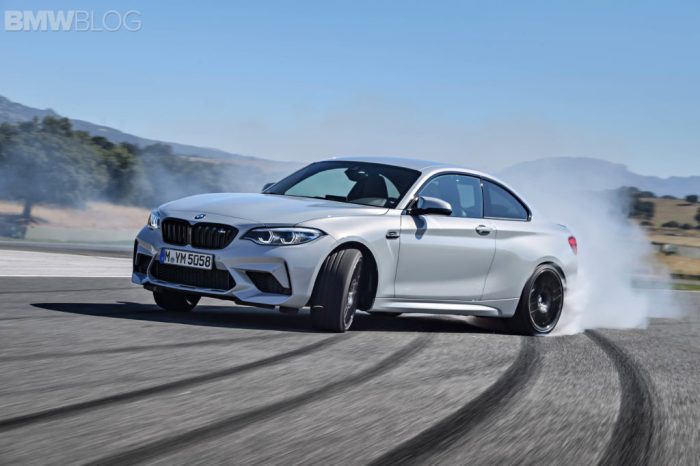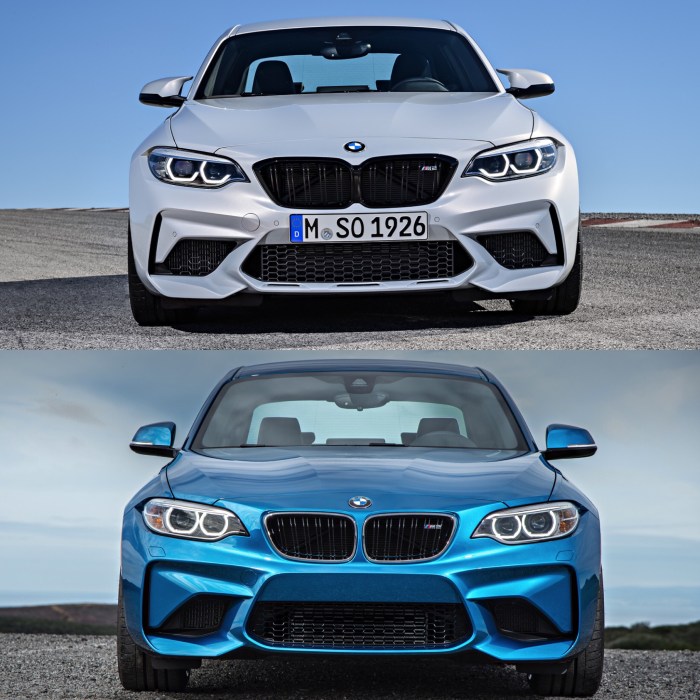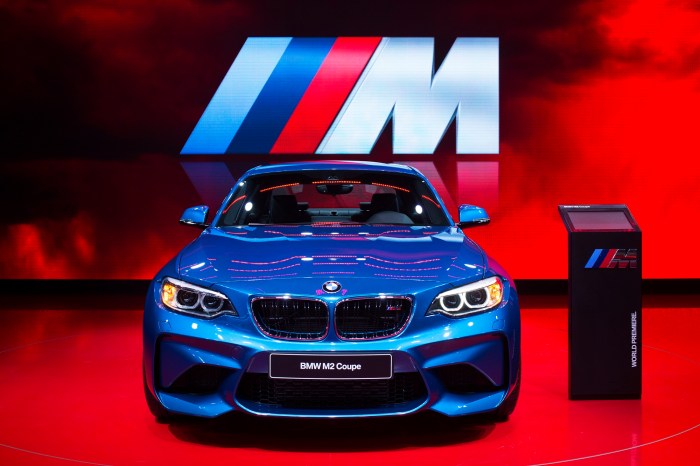BMW M3 vs M2 comparison sets the stage for an exciting showdown between these two iconic models from the German automaker. As the M3 continues to solidify its reputation as a performance powerhouse, the M2 presents a more compact and agile alternative, appealing to a different breed of driving enthusiasts. This analysis delves into the critical aspects of performance, design, technology, and ownership experience that distinguish these two remarkable cars.
Get the entire information you require about Manual transmission sports cars on this page.
From engine specifications to handling dynamics, and from cutting-edge technology to interior aesthetics, each model brings unique attributes to the table. Whether you’re drawn to the M3’s robust power or the M2’s spirited agility, understanding their differences will help you make an informed choice. Let’s explore what sets these BMW vehicles apart in the competitive luxury sports car market.
You also can investigate more thoroughly about Lexus RC F Track Edition to enhance your awareness in the field of Lexus RC F Track Edition.
Performance Comparison
The performance of the BMW M3 and M2 models is one of the most compelling aspects that enthusiasts consider. Both cars are engineered for speed and agility, but they cater to slightly different driving experiences.
Engine Specifications

The BMW M3 features a powerful 3.0-liter BMW M TwinPower Turbo inline 6-cylinder engine, delivering a robust 473 horsepower in the standard model and up to 503 horsepower in the Competition variant. In contrast, the M2 is equipped with a slightly smaller 3.0-liter inline 6-cylinder engine that produces 453 horsepower. This difference in power outputs creates a distinct character between the two models, with the M3 offering a more aggressive performance profile.
Acceleration and Handling
When it comes to acceleration, the M3 can achieve 0 to 60 mph in approximately 4.1 seconds for the standard version and 3.8 seconds for the Competition. The M2, while slightly slower, still impresses with a time of around 4.2 seconds. Both vehicles exhibit exceptional handling capabilities, but the M3 is renowned for its balance and stability at high speeds, thanks to its rear-wheel-drive layout and adaptive suspension. The M2, on the other hand, is more compact, which enhances its agility and responsiveness, making it a thrilling option for twisty roads.
Design and Aesthetics
The visual appeal of the M3 and M2 is unmistakable, with each model showcasing BMW’s signature design language, yet possessing unique traits that set them apart.
Exterior Design Elements
The M3 boasts a more aggressive front fascia with larger kidney grilles and a wider stance, which accentuates its sporty nature. The M2 features a more traditional BMW look, with a compact silhouette and rounded edges. The rear of the M3 showcases quad exhaust outlets and a pronounced diffuser, while the M2 opts for a more subtle yet sporty rear design.
Interior Features
Inside, both models prioritize luxury and technology. The M3’s cabin features high-quality materials, including Merino leather upholstery and carbon fiber accents, creating a sophisticated yet sporty atmosphere. The M2, while slightly less opulent, still offers comfortable sports seats and a driver-focused layout. The technology in both cars includes a state-of-the-art infotainment system, but the M3 leans more towards advanced options like gesture control and a larger display.
Color Options and Customization
BMW offers a variety of color options for both the M3 and M2, allowing buyers to personalize their vehicles. The M3 has a broader palette with several exclusive hues available for the Competition model, while the M2 offers vibrant colors that appeal to a younger demographic. Customization features like unique wheels and interior trims further enhance the distinctiveness of each model.
Technology and Features
Technology plays a critical role in the driving experience of both the M3 and M2, offering cutting-edge features that enhance convenience and safety.
Key Tech Features
Both vehicles are equipped with advanced infotainment systems that support Apple CarPlay and Android Auto. The M3 includes a more sophisticated sound system with optional Harman Kardon audio, while the M2 features a standard audio setup that still delivers impressive sound quality. Driver assistance technologies, such as adaptive cruise control and lane-keeping assist, are available in both models, enhancing safety on the road.
Connectivity Options
Connectivity in the M3 is more extensive, with additional USB ports and advanced navigation systems that provide real-time traffic updates. The M2, while still offering solid connectivity options, may not have as many features as its larger counterpart, which could influence tech-savvy buyers.
Pricing and Value
Understanding the pricing structure of the BMW M3 and M2 is essential for potential buyers, as it reflects the value each model provides.
Base Prices and Optional Packages
| Model | Base Price | Optional Packages |
|---|---|---|
| BMW M3 | $73,800 | Competitively priced options including M carbon package and premium tech package. |
| BMW M2 | $62,000 | Various packages available including the M Driver’s Package and advanced tech options. |
Long-Term Value and Depreciation
Historically, both the M3 and M2 maintain strong resale values, with the M3 typically having a slightly higher market demand due to its performance capabilities. Depreciation trends show that while luxury vehicles can lose value quickly, these models hold their worth better than average luxury cars, with the M3 slightly outperforming the M2.
Financing Options and Incentives
BMW offers various financing options for both models, including leasing and special APR rates for qualified buyers. Incentives may vary by region, but often include loyalty programs and seasonal offers to attract new customers.
Market Position and Competitors
The BMW M3 and M2 target distinct segments within the luxury sports car market, appealing to different types of enthusiasts.
Target Audience, BMW M3 vs M2 comparison
The M3 primarily attracts performance-oriented drivers seeking a high-end sports sedan experience, typically with a demographic of professionals or affluent individuals. The M2, being more compact and accessible, appeals to younger buyers or those looking for an entry into the luxury performance segment.
Main Competitors
In the luxury sports car segment, the M3 competes with models like the Audi RS5 and Mercedes-AMG C63, while the M2 faces rivals such as the Porsche 718 Cayman and Ford Mustang GT. Each competitor brings unique strengths, yet BMW positions the M3 and M2 with a focus on driving dynamics and brand heritage.
Brand Perception Against Rivals
BMW’s marketing emphasizes performance, luxury, and a rich motorsport heritage, which positions both the M3 and M2 favorably against rivals. The M3 is often viewed as the benchmark for performance sedans, while the M2 is celebrated for its engaging driving experience that harkens back to classic BMW sports cars.
Ownership Experience
Understanding the ownership experience of the BMW M3 and M2 is crucial for potential buyers considering these luxury vehicles.
Maintenance Costs
Maintenance costs for both models are relatively comparable, with routine servicing expected to be more expensive than standard vehicles due to the high-performance nature of the engines. Owners should anticipate costs for specialized services and parts that reflect the models’ premium status.
Warranty Coverage and Service Plans

BMW offers a comprehensive warranty for both models, typically including a four-year/50,000-mile warranty and maintenance plan, providing peace of mind for owners regarding potential repairs and regular servicing.
Driving Experience Differences
In everyday driving, the M3 offers comfort and advanced features that make it suitable for longer trips. In contrast, the M2 provides a more raw and exhilarating experience, particularly on winding roads or tracks, appealing to drivers seeking a purer connection to the vehicle.
Summary: BMW M3 Vs M2 Comparison

In conclusion, the BMW M3 vs M2 comparison reveals two distinct personalities within the same brand, each tailored for different tastes and driving experiences. The M3 excels in raw power and spaciousness, making it ideal for those who crave high performance with added practicality. Meanwhile, the M2 shines with its nimble handling and engaging driving dynamics, appealing to purists who prioritize driving enjoyment. Ultimately, your choice between these models will depend on your preferences and lifestyle, but both promise an exhilarating ride.